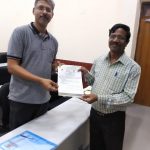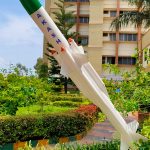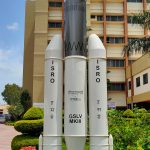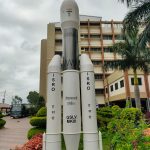Aerospace Engineering
Aerospace Engineering Department was established in year of 2017 with an intake of 60, affiliated under VTU with AICTE recognition to meet the intensifying needs for Aerospace Industries. Aerospace Engineering is the primary field of engineering concerned with the design development and launching of satellite launch vehicle, defense missiles and satellites for different applications. Aerospace Engineering curriculum consist of mainly fundamental aerodynamics, structures and propulsion subjects of aeronautical engineering and mechanical engineering in lower semesters and in higher semesters specialized topics like satellite launch vehicles design and analysis, Missile Design, Spacecraft design and analysis, Space dynamics, Intra planetary travels and Space environment. India is one of the leading countries in the aerospace field. To support the current and future challenges in the field of aerospace, ACSCE formulates quality engineers specialized in aerospace technology.
The Aerospace Engineering Department at ACS College of Engineering was established in 2017 with an intake capacity of 60 students. Affiliated with Visvesvaraya Technological University (VTU) and recognized by AICTE, the department is dedicated to meeting the evolving needs of the aerospace industry. The department achieved NBA accreditation in 2024, reflecting its commitment to delivering high-quality education and maintaining global standards.
The department boasts a team of highly qualified and experienced faculty members dedicated to excellence in teaching, research, and innovation. The department has received various research fundings from prestigious organizations such as DRDO, DRDL, ISRO, and others, supporting cutting-edge research and development projects in aerospace technology.
The department is equipped with state-of-the-art facilities, including an ISRO-sponsored IRNSS Data Centre, a Satellite Tracking and Telemetry Lab, a Solid Rocket Propellant Testing Setup, a Smart Flight Simulator, and a High-Performance Computing Lab Facility sponsored by ARDB. These facilities provide students with hands-on learning experiences and exposure to cutting-edge aerospace technologies.
The curriculum is designed to blend core principles of Aerodynamics, Structures, and Propulsion in the early semesters with advanced topics such as Satellite Launch Vehicle Design and Analysis, Missile Design, Spacecraft Design and Analysis, Space Dynamics, Interplanetary Travel, and Space Environment in the later semesters.
The department also fosters industry-academia collaboration through its Aeronautical Sector Skill Council (ASSC) Student Chapter, established in association with Jet Aerospace and Aviation Centre, Palakkad, to enhance students’ skills and industry readiness.
India’s position as a global leader in the aerospace sector drives the department’s vision of producing skilled engineers equipped to tackle current and future challenges in aerospace technology.
Cadmaxx Edtech Pvt Ltd
Unique Lab Equipments
Barathi Enterprises
EdgeOpt
Aerolance
Shanlax Journals
Bnow Academy Foundation
SS Technologies
RAY DYNAMICS
Sandi
Accord
Aerospace Structures Lab
Avionics and Instrumentation Lab
Computer Aided Aircraft Design Lab
Design Modelling and Analysis Lab
Energy Conversion _ Heat Mass Transfer Manual
Fluid Mechanics Lab Manual
Propulsion Lab
Simuiation Laboratory
View Event List 2021-22
View Event List 2020-21
View Event List 2019-20
View Event List 2018-19
View Club Activities 2021-22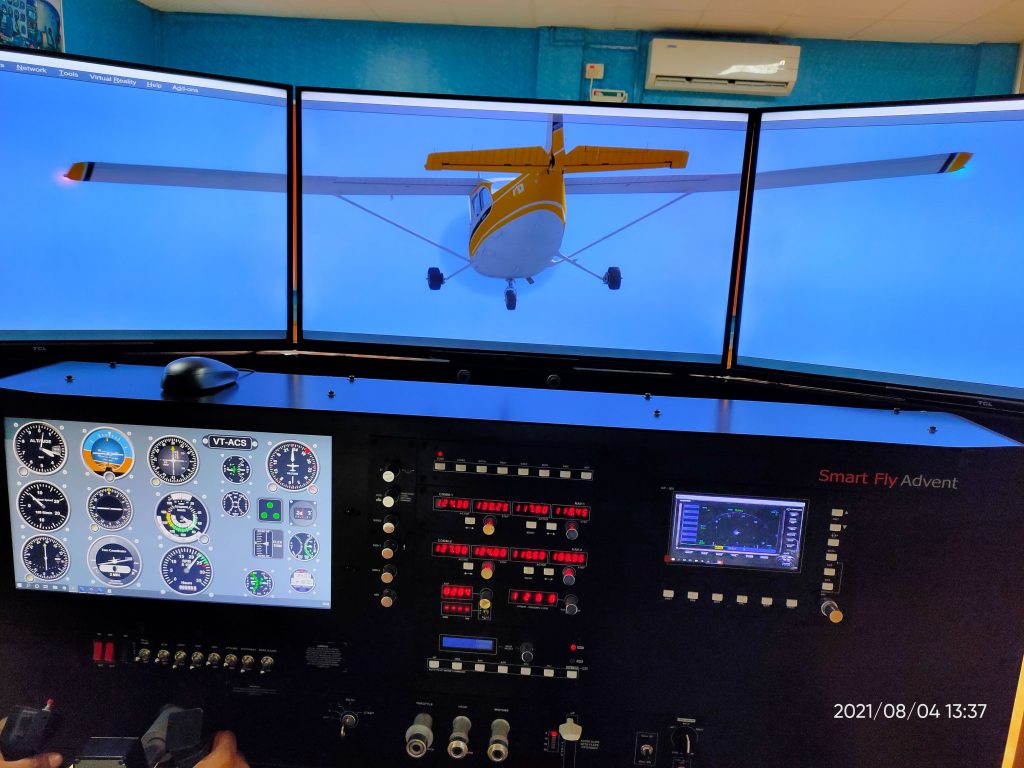 Indian Regional Navigation Satellite System (IRNSS/NavIC) Data Centre
Space Application Centre (SAC), ISRO, Ahmedabad has tied up with ACS College of Engineering to test its new navigation system, IRNSS (Indian Regional Navigation Satellite System). The two receivers installed in the institute provides time and position related data in real time. The initiative is aimed at capacity building and thereby facilitating research studies among students.The Receiver is for experimentation, field trials and collection of data from the IRNSS or NavIC constellation and also a Multi View GNSS receiver is sponsored by the management for different satellite constellation analysis.
Indian Regional Navigation Satellite System (IRNSS/NavIC) Data Centre
Space Application Centre (SAC), ISRO, Ahmedabad has tied up with ACS College of Engineering to test its new navigation system, IRNSS (Indian Regional Navigation Satellite System). The two receivers installed in the institute provides time and position related data in real time. The initiative is aimed at capacity building and thereby facilitating research studies among students.The Receiver is for experimentation, field trials and collection of data from the IRNSS or NavIC constellation and also a Multi View GNSS receiver is sponsored by the management for different satellite constellation analysis.
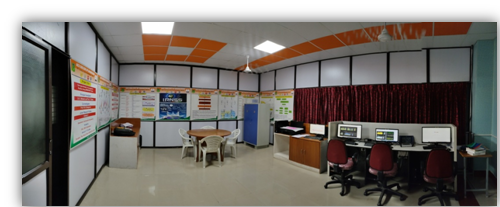 Propulsion Lab
Propulsion Lab
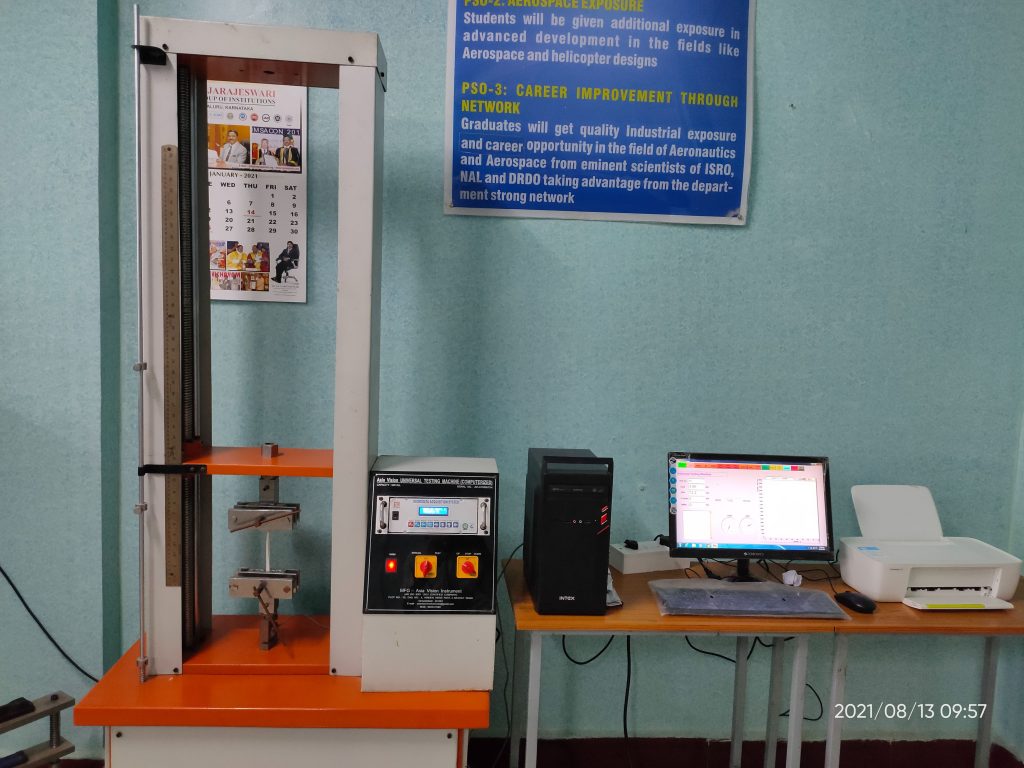 Universal Testing Machine – Specially designed for Rocket Propellant Testing. The UTM Provides a relatively inexpensive way for determining the Tensile, Compression, Shear Strength and elongation of variety of raw materials.
Universal Testing Machine – Specially designed for Rocket Propellant Testing. The UTM Provides a relatively inexpensive way for determining the Tensile, Compression, Shear Strength and elongation of variety of raw materials.
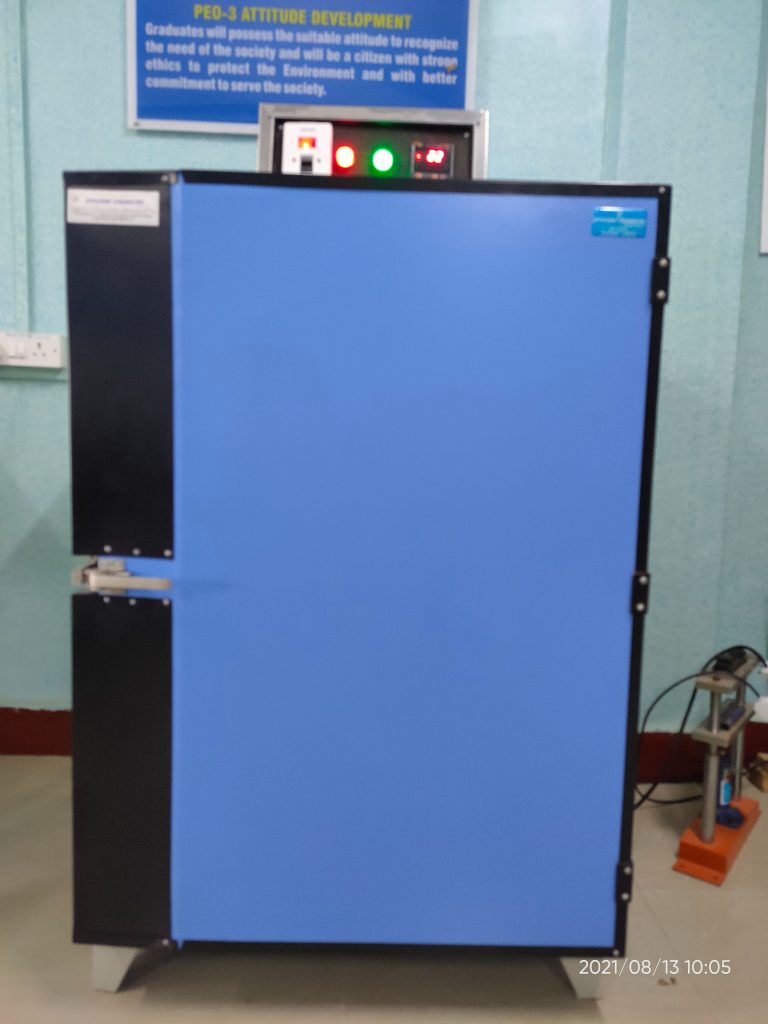 Tumansky R – 25 – 300 Series Supersonic Jet Engine
The Russian Tumansky R – 25 – 300 Series Engine was built under license by HAL in India for MIG 21 BIS fleet aircraft. It is a supersonic jet engine with straight flow. The engine is having a feature of axial flow turbo jet engine with increased overall pressure ratio and airflow. It has a twin spool axial flow 8 stage compressor which comprises of 3 stage low pressure compressor and 5 stage high pressure compressor. The engine is having 10 can annular type combustion chambers. The fuel and air mixture inside the combustion chamber is ignited by torch ignitors. The reaction type turbine contains 2 stages, among that one is high pressure stage and another one is low pressure stage. The turbine inlet temperature is 1040 deg Celsius. It has a second fuel pump in the after-burner stage. The engine is having variable jet nozzle. The length of the engine is 4615 mm which can produce a maximum thrust of 40. 3 kN without afterburner and also it can produce a thrust of 69.6 kN with after burner switched on condition. The fuel used in this engine is Kerosene ATF, T1, TC1 and T2.
The Tumansky R – 25 – 300 engine available in ACSCE was partially cutdown and projected in transparent mode for visualizing the inner parts of the engine. The engine compressor is attached with a variable RPM motor for demonstration purposes. It will be helpful for the students to get deep knowledge about the various components and working principle of the Jet engine in detail.
Tumansky R – 25 – 300 Series Supersonic Jet Engine
The Russian Tumansky R – 25 – 300 Series Engine was built under license by HAL in India for MIG 21 BIS fleet aircraft. It is a supersonic jet engine with straight flow. The engine is having a feature of axial flow turbo jet engine with increased overall pressure ratio and airflow. It has a twin spool axial flow 8 stage compressor which comprises of 3 stage low pressure compressor and 5 stage high pressure compressor. The engine is having 10 can annular type combustion chambers. The fuel and air mixture inside the combustion chamber is ignited by torch ignitors. The reaction type turbine contains 2 stages, among that one is high pressure stage and another one is low pressure stage. The turbine inlet temperature is 1040 deg Celsius. It has a second fuel pump in the after-burner stage. The engine is having variable jet nozzle. The length of the engine is 4615 mm which can produce a maximum thrust of 40. 3 kN without afterburner and also it can produce a thrust of 69.6 kN with after burner switched on condition. The fuel used in this engine is Kerosene ATF, T1, TC1 and T2.
The Tumansky R – 25 – 300 engine available in ACSCE was partially cutdown and projected in transparent mode for visualizing the inner parts of the engine. The engine compressor is attached with a variable RPM motor for demonstration purposes. It will be helpful for the students to get deep knowledge about the various components and working principle of the Jet engine in detail.
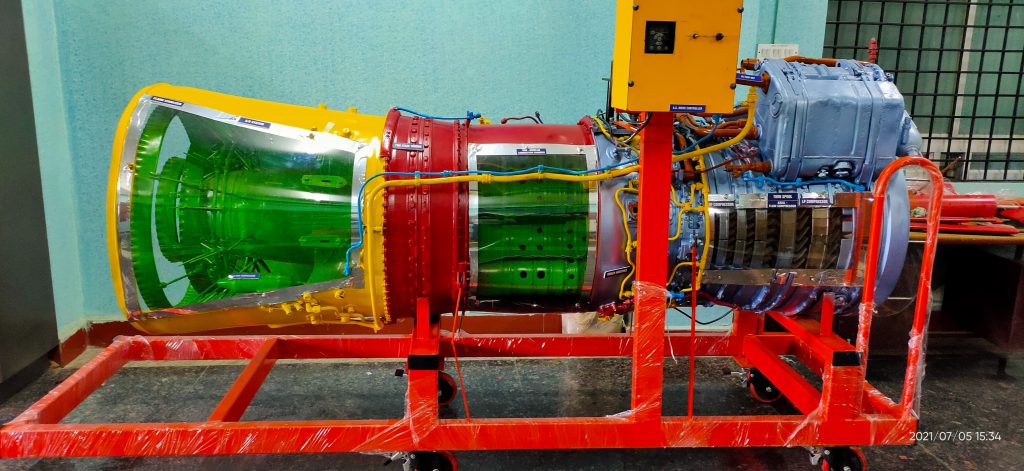 Avionics and Instrumentation Lab
Avionics is a combination of Aviation and Electronics. Avionics laboratory provides opportunities to Aerospace students to have better understanding of electronic components used in various Aircrafts, rockets, missiles and spacecrafts. This lab comprises of experiments which deals with digital electronics, microprocessors,aircraft instruments and MIL-1553B data bus. The experiment related to the Digital Electronics helps the students to understand in detail a complex problem statement into simple logical expressions that could be addressed with minimum number of gates. These experiments provide an ideology of miniaturization of electronic circuits that were used in Aerospace field. The programming of microprocessor would aid the students to have an idea on Auto Pilot system where an Auto pilot system designer must have the capability to work with sensors & interpret the data from real time environment with that of it. The experiment related to Avionics data bus aids the student to have an understanding of how a data bus carries data to different subunits.
GSLV MK III and Akash Missile
The Department is having GSLV MK III and Akash Missile prototype models for study purposes.
Avionics and Instrumentation Lab
Avionics is a combination of Aviation and Electronics. Avionics laboratory provides opportunities to Aerospace students to have better understanding of electronic components used in various Aircrafts, rockets, missiles and spacecrafts. This lab comprises of experiments which deals with digital electronics, microprocessors,aircraft instruments and MIL-1553B data bus. The experiment related to the Digital Electronics helps the students to understand in detail a complex problem statement into simple logical expressions that could be addressed with minimum number of gates. These experiments provide an ideology of miniaturization of electronic circuits that were used in Aerospace field. The programming of microprocessor would aid the students to have an idea on Auto Pilot system where an Auto pilot system designer must have the capability to work with sensors & interpret the data from real time environment with that of it. The experiment related to Avionics data bus aids the student to have an understanding of how a data bus carries data to different subunits.
GSLV MK III and Akash Missile
The Department is having GSLV MK III and Akash Missile prototype models for study purposes.
View Internship Details 2021-22
View Internship Details 2020-21
View Newsletter 2021-22
View Newsletter 2020-21
View Newsletter 2019-20
View Newsletter 2018-19
The Aerospace Engineering Department at ACS College of Engineering was established in 2017 with an intake capacity of 60 students. Affiliated with Visvesvaraya Technological University (VTU) and recognized by AICTE, the department is dedicated to meeting the evolving needs of the aerospace industry. The department achieved NBA accreditation in 2024, reflecting its commitment to delivering high-quality education and maintaining global standards.
The department boasts a team of highly qualified and experienced faculty members dedicated to excellence in teaching, research, and innovation. The department has received various research fundings from prestigious organizations such as DRDO, DRDL, ISRO, and others, supporting cutting-edge research and development projects in aerospace technology.
The department is equipped with state-of-the-art facilities, including an ISRO-sponsored IRNSS Data Centre, a Satellite Tracking and Telemetry Lab, a Solid Rocket Propellant Testing Setup, a Smart Flight Simulator, and a High-Performance Computing Lab Facility sponsored by ARDB. These facilities provide students with hands-on learning experiences and exposure to cutting-edge aerospace technologies.
The curriculum is designed to blend core principles of Aerodynamics, Structures, and Propulsion in the early semesters with advanced topics such as Satellite Launch Vehicle Design and Analysis, Missile Design, Spacecraft Design and Analysis, Space Dynamics, Interplanetary Travel, and Space Environment in the later semesters.
The department also fosters industry-academia collaboration through its Aeronautical Sector Skill Council (ASSC) Student Chapter, established in association with Jet Aerospace and Aviation Centre, Palakkad, to enhance students’ skills and industry readiness.
India’s position as a global leader in the aerospace sector drives the department’s vision of producing skilled engineers equipped to tackle current and future challenges in aerospace technology.
Quality Policy
- To provide competitive and academic programs to produce technologists and professionals for national and global needs.
- To be a centre for reference, research and consultation through smart partnership with industries and stake holders.
- Educate tomorrow’s leaders through innovative educational programs & pedagogies that have as their context the conception, design, implementation and operation of systems; and processes; create research opportunities that generate inventions, technologies and solutions to Aerospace problems
VISION
The Aerospace Department seeks to nurture creativity among the students for shaping the next generation of aerospace systems.MISSION
- To provide capable, motivated, and high quality aerospace engineering students, that will enable them to reach their maximum potential in the technological world.
- To significantly advance the knowledge of the students and integrate them in aerospace related disciplines.
- To perform research that is timely and of importance to society, which coincide with relevant interests in the engineering community and the community at large.
PROGRAM EDUCATIONAL OBJECTIVES (PEO’S)
- PEO-1 PROFESSIONAL KNOWLEDGE: Aerospace Graduates will have the ability to apply knowledge across the disciplines and in emerging areas of Aerospace Engineering for higher studies, research, employability and product development.
- PEO-2 LEADERSHIP SKILLS: Graduates possess academic excellence, managerial skills, leadership qualities and understand the need for lifelong learning for a successful professional career.
- PEO-3 ATTITUDE DEVELOPMENT: Graduates will have the communication skills, sense of responsibility to protect the environment and ethical conduct towards their profession and commitment to serve the society.
Program Specific Outcomes (PSO’s)
- PSO 1. Professional Skills : Apply the knowledge of aerospace engineering in innovative, dynamic and challenging environment for design and development of flight/space vehicles through simulation, Programming skills and general-purpose CAE packages.
- PSO 2. Practical implementation and Testing Skills : Providing different types of in-house training and industry practice to fabricate, test and develop the products with more innovative technologies.
- PSO 3. Successful Career and Entrepreneurship : To prepare the students to become technocrats with broad aerospace knowledge for design and development of systems and subsystems for aerospace and associated fields.
PROGRAM OUTCOME (POs)
- PO1 – Engineering Knowledge: Apply knowledge of mathematics and science, with fundamentals of Aerospace Engineering to be able to solve complex engineering problems related to Aerospace Engineering
- PO2 – Problem Analysis: Identify, Formulate, review research literature and analyse complex engineering problems related to Aerospace Engineering and reaching substantiated conclusions using first principles of mathematics, natural sciences and engineering sciences.
- PO3 – Design/Development of solutions: Design solutions for complex aircraft problems related to Aerospace Engineering and design system components or processes that meet the specified needs with appropriate consideration for the public health and safety and the cultural societal and environmental considerations.
- PO4 – Conduct Investigations of Complex problems: Use research–based knowledge and research methods including design of Aircraft and Aerospace structure experiments, analysis and interpretation of data, and synthesis of the information to provide valid conclusions.
- PO5 – Modern Tool Usage: Create, Select and apply appropriate techniques, resources and modern engineering and IT tools including prediction and modelling to Aerospace Engineering related complex engineering activities with an understanding of the limitations.
- PO6 – The Engineer and Society: Apply Reasoning informed by the contextual knowledge to assess societal, health, safety, legal and cultural issues and the consequent responsibilities relevant to the Aerospace professional engineering practice.
- PO7 – Environment and Sustainability: Understand the impact of the Aerospace professional engineering solutions in societal and environmental contexts and demonstrate the knowledge of, and need for sustainable development.
- PO8 – Ethics: Apply Ethical Principles and commit to professional ethics and responsibilities and norms of the engineering practice.
- PO9 – Individual and Team Work: Function effectively as an individual and as a member or leader in diverse teams and in multidisciplinary Settings.
- PO10 – Communication: Communicate effectively on complex engineering activities with the engineering community and with High society and with write effective reports and design documentation, make effective presentations and give and receive clear instructions.
- PO11 – Project Management and Finance: Demonstrate knowledge and understanding of the engineering management principles and apply these to one’s own work, as a member and leader in a team, to manage projects and in multi-disciplinary environments.
- PO12 – Life-Long Learning: Recognize the need for and have the preparation and ability to engage in independent and life-long learning the broadest content of technological change.
Department Profile
Karnataka State is the hub of various Aerospace industries. With the intensions to fulfil the increasing demands of skilled manpower in these industries and hence to serve the society, the Department of Aerospace Engineering was established in year 2017 with under Graduate Course in Bachelor of Engineering in Aerospace Engineering under VTU, Belgaum. The course is approved by AICTE, New Delhi. Aerospace Engineering curriculum consist of fundamental subjects like aerodynamics, structures and propulsion in lower semesters and in higher semesters specialized topics like Launch Vehicles design and analysis, Missile Design, Spacecraft design and analysis, Space dynamics, Intra planetary travels and Space environment. On successful completion of the course the student may get opportunities to join various Aerospace industries like ISRO, DRDO, GTRE, HAL, NAL, Boeing, Airbus, Honeywell, TCS, Goodrich, Mahindra Aerospace, Accord Systems, Data Patterns, Servo controls, Dassault – Reliance Aerospace, Safran Engineering Services, Aequs etc.JRF Recruitment Notice
Applications are invited from the eligible candidates for the Junior Research Fellow Post for the ARDB-funded research project titled “Prediction of Aerodynamics Characteristics of Grid Fins at Subsonic, Transonic and Supersonic Flows“
JRF recruitment circularAerospace – SAR
SAR 2023Aerospace – MOU
SAC ISRO MOUCadmaxx Edtech Pvt Ltd
Unique Lab Equipments
Barathi Enterprises
EdgeOpt
Aerolance
Shanlax Journals
Bnow Academy Foundation
SS Technologies
RAY DYNAMICS
Sandi
Accord
Aerospace – Lab Manual
Aerodynamics LabAerospace Structures Lab
Avionics and Instrumentation Lab
Computer Aided Aircraft Design Lab
Design Modelling and Analysis Lab
Energy Conversion _ Heat Mass Transfer Manual
Fluid Mechanics Lab Manual
Propulsion Lab
Simuiation Laboratory
Aerospace – Event Conduction
View Event List 2022-23View Event List 2021-22
View Event List 2020-21
View Event List 2019-20
View Event List 2018-19
Aerospace – Club Activities
View Club Activities 2022-23View Club Activities 2021-22
Aerospace – Industrial Visit
View ReportAerospace – PhD Details
View Scholars DetailsAerospace – Projects and Patents
View Funded Project DetailsAerospace – Publications
View Publication DetailsAerospace – Student Chapter Event
View EventsAerospace – Placement Details
Placed Student Details:
View Placed Student DetailsAerospace – Infrastructure
Facilities
Smartfly Advent Flight Simulator:
The SmartFly Advent Flight Simulatoris an Open frame fixed base Aviation Ground flying trainer simulator run by custom build PCs (server client model) with 3-channel visual LCD/LED monitor for displaying visual environment with exclusive instrument gauges display. Single control yoke having continuously adjustable pitch/roll control and single rudder pedal for yaw control with differential brakes. The operational physical controls such as, switch pack, Throttle, Propeller and Mixture unit, Flaps with LED flap position indicator, landing Gear with position indicators, Trim wheel, Gauge control, digital radio avionics stack, GP500 GPS module and external Instructor operating station are available. The digital avionics radio stack gives the best training environment to practice radio and flight navigation procedures. Multiple instruments like ASI, VSI, AM, MM, AI, GH, etc are available. Moving map with flight review, vertical and horizontal flight path with ILS/VOR is available in the simulator. Flight planning and multi aircraft configuration can also be done with this simulator.Highlights of the Simulator:
- Learn & practice the concept of maneuvering, Navigation under visual or instrument flight conditions.
- Innovative instructor station puts student /trainee into various situations including weather, system and instrument failures etc. to master the procedures.
- Digital Avionics Radio stack gives the best training environment to practice radio and Flight navigation procedures.
- Become proficient and master flying Visual Flight Rules /Instrument Flight Rules under Instrument meteorological conditions day or night to almost any airport in the world.
 Indian Regional Navigation Satellite System (IRNSS/NavIC) Data Centre
Space Application Centre (SAC), ISRO, Ahmedabad has tied up with ACS College of Engineering to test its new navigation system, IRNSS (Indian Regional Navigation Satellite System). The two receivers installed in the institute provides time and position related data in real time. The initiative is aimed at capacity building and thereby facilitating research studies among students.The Receiver is for experimentation, field trials and collection of data from the IRNSS or NavIC constellation and also a Multi View GNSS receiver is sponsored by the management for different satellite constellation analysis.
Indian Regional Navigation Satellite System (IRNSS/NavIC) Data Centre
Space Application Centre (SAC), ISRO, Ahmedabad has tied up with ACS College of Engineering to test its new navigation system, IRNSS (Indian Regional Navigation Satellite System). The two receivers installed in the institute provides time and position related data in real time. The initiative is aimed at capacity building and thereby facilitating research studies among students.The Receiver is for experimentation, field trials and collection of data from the IRNSS or NavIC constellation and also a Multi View GNSS receiver is sponsored by the management for different satellite constellation analysis.
 Propulsion Lab
Propulsion Lab
 Universal Testing Machine – Specially designed for Rocket Propellant Testing. The UTM Provides a relatively inexpensive way for determining the Tensile, Compression, Shear Strength and elongation of variety of raw materials.
Universal Testing Machine – Specially designed for Rocket Propellant Testing. The UTM Provides a relatively inexpensive way for determining the Tensile, Compression, Shear Strength and elongation of variety of raw materials.
 Tumansky R – 25 – 300 Series Supersonic Jet Engine
The Russian Tumansky R – 25 – 300 Series Engine was built under license by HAL in India for MIG 21 BIS fleet aircraft. It is a supersonic jet engine with straight flow. The engine is having a feature of axial flow turbo jet engine with increased overall pressure ratio and airflow. It has a twin spool axial flow 8 stage compressor which comprises of 3 stage low pressure compressor and 5 stage high pressure compressor. The engine is having 10 can annular type combustion chambers. The fuel and air mixture inside the combustion chamber is ignited by torch ignitors. The reaction type turbine contains 2 stages, among that one is high pressure stage and another one is low pressure stage. The turbine inlet temperature is 1040 deg Celsius. It has a second fuel pump in the after-burner stage. The engine is having variable jet nozzle. The length of the engine is 4615 mm which can produce a maximum thrust of 40. 3 kN without afterburner and also it can produce a thrust of 69.6 kN with after burner switched on condition. The fuel used in this engine is Kerosene ATF, T1, TC1 and T2.
The Tumansky R – 25 – 300 engine available in ACSCE was partially cutdown and projected in transparent mode for visualizing the inner parts of the engine. The engine compressor is attached with a variable RPM motor for demonstration purposes. It will be helpful for the students to get deep knowledge about the various components and working principle of the Jet engine in detail.
Tumansky R – 25 – 300 Series Supersonic Jet Engine
The Russian Tumansky R – 25 – 300 Series Engine was built under license by HAL in India for MIG 21 BIS fleet aircraft. It is a supersonic jet engine with straight flow. The engine is having a feature of axial flow turbo jet engine with increased overall pressure ratio and airflow. It has a twin spool axial flow 8 stage compressor which comprises of 3 stage low pressure compressor and 5 stage high pressure compressor. The engine is having 10 can annular type combustion chambers. The fuel and air mixture inside the combustion chamber is ignited by torch ignitors. The reaction type turbine contains 2 stages, among that one is high pressure stage and another one is low pressure stage. The turbine inlet temperature is 1040 deg Celsius. It has a second fuel pump in the after-burner stage. The engine is having variable jet nozzle. The length of the engine is 4615 mm which can produce a maximum thrust of 40. 3 kN without afterburner and also it can produce a thrust of 69.6 kN with after burner switched on condition. The fuel used in this engine is Kerosene ATF, T1, TC1 and T2.
The Tumansky R – 25 – 300 engine available in ACSCE was partially cutdown and projected in transparent mode for visualizing the inner parts of the engine. The engine compressor is attached with a variable RPM motor for demonstration purposes. It will be helpful for the students to get deep knowledge about the various components and working principle of the Jet engine in detail.
 Avionics and Instrumentation Lab
Avionics is a combination of Aviation and Electronics. Avionics laboratory provides opportunities to Aerospace students to have better understanding of electronic components used in various Aircrafts, rockets, missiles and spacecrafts. This lab comprises of experiments which deals with digital electronics, microprocessors,aircraft instruments and MIL-1553B data bus. The experiment related to the Digital Electronics helps the students to understand in detail a complex problem statement into simple logical expressions that could be addressed with minimum number of gates. These experiments provide an ideology of miniaturization of electronic circuits that were used in Aerospace field. The programming of microprocessor would aid the students to have an idea on Auto Pilot system where an Auto pilot system designer must have the capability to work with sensors & interpret the data from real time environment with that of it. The experiment related to Avionics data bus aids the student to have an understanding of how a data bus carries data to different subunits.
GSLV MK III and Akash Missile
The Department is having GSLV MK III and Akash Missile prototype models for study purposes.
Avionics and Instrumentation Lab
Avionics is a combination of Aviation and Electronics. Avionics laboratory provides opportunities to Aerospace students to have better understanding of electronic components used in various Aircrafts, rockets, missiles and spacecrafts. This lab comprises of experiments which deals with digital electronics, microprocessors,aircraft instruments and MIL-1553B data bus. The experiment related to the Digital Electronics helps the students to understand in detail a complex problem statement into simple logical expressions that could be addressed with minimum number of gates. These experiments provide an ideology of miniaturization of electronic circuits that were used in Aerospace field. The programming of microprocessor would aid the students to have an idea on Auto Pilot system where an Auto pilot system designer must have the capability to work with sensors & interpret the data from real time environment with that of it. The experiment related to Avionics data bus aids the student to have an understanding of how a data bus carries data to different subunits.
GSLV MK III and Akash Missile
The Department is having GSLV MK III and Akash Missile prototype models for study purposes.
Aerospace – Internship
View Internship Details 2022-23View Internship Details 2021-22
View Internship Details 2020-21
Aerospace – Newsletter
View Newsletter 2022-23View Newsletter 2021-22
View Newsletter 2020-21
View Newsletter 2019-20
View Newsletter 2018-19











